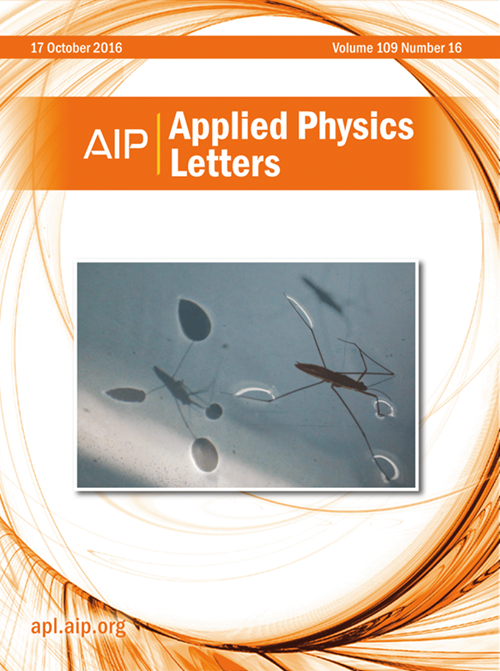sb掺杂MnBi4Te7磁性拓扑绝缘体磁相变的敏感应变效应
IF 3.5
2区 物理与天体物理
Q2 PHYSICS, APPLIED
引用次数: 0
摘要
最近的实验成功地用Sb掺杂制备了铁磁拓扑绝缘体MnBi4Te7。然而,关于不同掺杂浓度下的磁相变,已经出现了不同的结论,以及对铁磁起源的有争议的解释。基于第一性原理计算,我们证明了Sb掺杂MnBi4Te7的磁性演化不仅归因于在一些实验中观察到的Mn-Bi /Sb对位缺陷,而且还受到应变效应的显著影响。此外,我们的研究结果表明,当Sb掺杂浓度超过30%时,磁性相变伴随着n型载流子向p型载流子的转变,这与实验观察结果非常吻合。此外,Sb取代导致载流子有效质量的明显差异,这与实验测量的载流子迁移率在质量上是一致的。此外,由于Sb - te键相对较弱,Sb掺杂导致更多的非定域载流子。基于这些发现,我们进一步讨论了增强的载流子离域如何影响层间磁耦合,导致随着Sb浓度的增加,远程磁性从反铁磁相到铁磁相再回到反铁磁相的非单调演化。本文章由计算机程序翻译,如有差异,请以英文原文为准。
Sensitive strain effect on magnetic phase transitions in Sb-doped MnBi4Te7 magnetic topological insulator
Recent experiments have successfully fabricated ferromagnetic topological insulator MnBi4Te7 by Sb doping. However, distinct conclusions regarding magnetic phase transitions at different doping concentrations have emerged, alongside controversial interpretations of ferromagnetic origin. Based on first-principles calculations, we demonstrate that the evolution of magnetism in Sb-doped MnBi4Te7 is not only attributed to Mn–Bi/Sb antisite defects, as observed in some experiments, but is also significantly influenced by strain effects. Furthermore, our results reveal that magnetic phase transition is accompanied by a change from n-type to p-type charge carriers at Sb doping concentrations exceeding 30%, in excellent agreement with experimental observation. Moreover, Sb substitution leads to an obvious difference in the effective mass of charge carriers, which qualitatively coincides with experimentally measured carrier mobility. Additionally, Sb doping results in more delocalized charge carriers due to the relatively weaker Sb–Te bonding. Based on these findings, we further discuss how the enhanced carrier delocalization influences interlayer magnetic coupling, leading to a nonmonotonic evolution of long-range magnetism from antiferromagnetic to ferromagnetic and back to antiferromagnetic phases with increased Sb concentration.
求助全文
通过发布文献求助,成功后即可免费获取论文全文。
去求助
来源期刊

Applied Physics Letters
物理-物理:应用
CiteScore
6.40
自引率
10.00%
发文量
1821
审稿时长
1.6 months
期刊介绍:
Applied Physics Letters (APL) features concise, up-to-date reports on significant new findings in applied physics. Emphasizing rapid dissemination of key data and new physical insights, APL offers prompt publication of new experimental and theoretical papers reporting applications of physics phenomena to all branches of science, engineering, and modern technology.
In addition to regular articles, the journal also publishes invited Fast Track, Perspectives, and in-depth Editorials which report on cutting-edge areas in applied physics.
APL Perspectives are forward-looking invited letters which highlight recent developments or discoveries. Emphasis is placed on very recent developments, potentially disruptive technologies, open questions and possible solutions. They also include a mini-roadmap detailing where the community should direct efforts in order for the phenomena to be viable for application and the challenges associated with meeting that performance threshold. Perspectives are characterized by personal viewpoints and opinions of recognized experts in the field.
Fast Track articles are invited original research articles that report results that are particularly novel and important or provide a significant advancement in an emerging field. Because of the urgency and scientific importance of the work, the peer review process is accelerated. If, during the review process, it becomes apparent that the paper does not meet the Fast Track criterion, it is returned to a normal track.
 求助内容:
求助内容: 应助结果提醒方式:
应助结果提醒方式:


